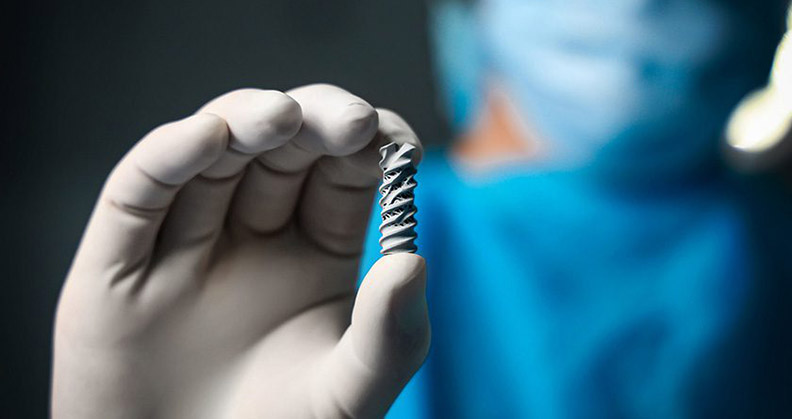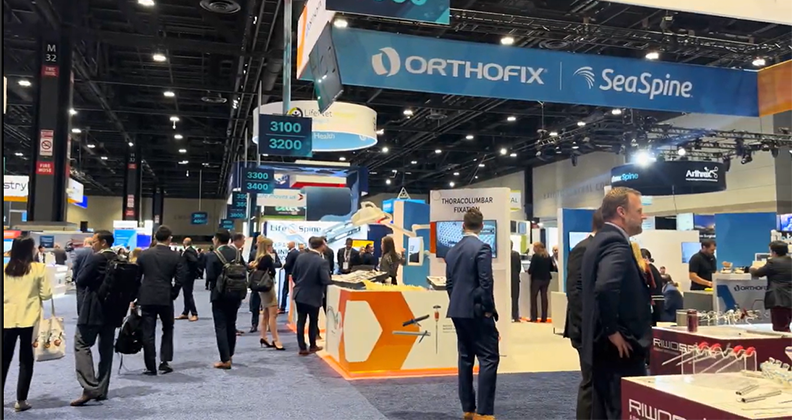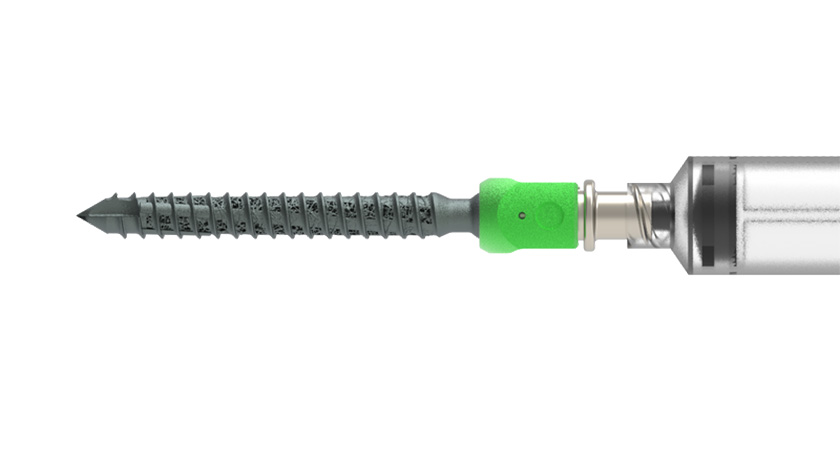
Clinical data is the thread that leads to improved patient safety in orthopedics. It weaves through the regulatory and legalistic landscapes and crisscrosses clinical practice and medical affairs. Although the destination is understood, the relative meaning of these touch points changes depending on perspectives along the way.
Here we’ll explore the pathway to success in using real-world evidence (RWE) to enhance product development efforts and consider successes in the pharmaceutical industry, which could provide a blueprint to follow in orthopedics.
‘Dirty’ by Definition
So, what is RWE? The answer isn’t straightforward. FDA considers RWE to be “clinical evidence about the usage and potential benefits or risks of a medical product derived from analysis of real-world data (RWD).” This definition seems to be somewhat circular, requiring an understanding of RWD.
EU MDR does not provide a specific definition, and the EU’s Medical Device Coordination Group’s guidance is notably silent. Despite EU MDR’s lack of an explicit definition, regulatory experts know that the legislation creates the opportunity to use multiple data sources in support of the risk/benefit analysis.
RWE has a role in assessing the safety, efficacy and cost-effectiveness of surgical interventions. In practice, it’s fair to submit that FDA and EU MDR recognize the significance of RWE in evaluating the safety and effectiveness of medical products and devices within their respective regulatory frameworks.
RWE likely captures a range of RWD, which is routinely obtained from a variety of sources, including electronic health records, claims data or patient registries. Accordingly, RWD is typically generated outside the controlled environment of randomized clinical trials, where heterogeneous outcomes are sourced from heterogeneous cohorts.
Importantly, this heterogeneity is the defining limitation of RWE. Data from statistically “dirty sources” is dirty, and dirty data is likely to violate regulatory requirements, particularly under EU MDR for which the “amount and quality” must be able “to guarantee the scientific validity of the conclusions.”
RWE should be a slice of the data pie offered with consideration; it’s useful in addressing the complexity of sub-groups in clinical data sets. As always, “data in, data out” is the maxim that dictates the extent of that usefulness.
Promise and Pitfalls
Although zeroing in on a clear definition of RWE can prove problematic, its potential benefits and drawbacks are more evident:
The pros of RWE include:
- Broader Patient Representation. RWE encompasses a diverse patient population and includes individuals often excluded from traditional clinical trials, providing a more comprehensive understanding of how interventions perform in the real world.
- Long-term Data. RWE enables the assessment of long-term safety and effectiveness, critical factors in the development of orthopedic devices because many issues manifest over extended periods.
- Cost-effectiveness. Conducting traditional clinical trials for medical devices can be resource-intensive. RWE offers a more affordable means to collect data for regulatory submissions and postmarket surveillance.
- Faster Decision-making. RWE can leverage existing healthcare data to expedite regulatory decisions and device approvals, helping innovative technologies reach patients sooner.
- Enhanced Safety Surveillance. RWE provides continuous monitoring of device safety, allowing for the timely identification of adverse events and enabling swift regulatory responses.
The cons of RWE can include:
- Data Quality. RWE relies on existing healthcare data, which can vary in quality and lead to potential biases and inaccuracies in analyses. This issue was evident in the “data camouflage” that affected the ability of joint registries to respond to complications related to the use of metal-on-metal hip implants.
- Data Availability and Accessibility. Access to comprehensive and standardized healthcare data is not universal and the collection of relevant data can be challenging, especially for rare conditions or specific patient populations.
- Confounding Factors. Patient outcomes can be influenced by numerous variables that are not always adequately controlled for in RWE analyses.
- Selection Bias. RWE can be subject to selection bias when certain patient groups are over- or under-represented, which leads to skewed results.
- Lack of Randomization. Unlike controlled clinical trials, RWE lacks randomization, making it difficult to establish causality and infer direct cause-and-effect relationships.
Additionally, a range of limitations specific to orthopedic devices exist:
- Complex Outcomes. Orthopedic devices often aim to improve mobility and reduce pain. Measuring these outcomes in a standardized manner across real-world settings can be challenging.
- Restricted Patient Diversity. Including diverse populations is needed to improve patient care and reduce health disparities.
- Heterogeneity in Devices. The orthopedic device landscape is diverse, with numerous types of implants and prostheses on the market. Applying RWE to all types of devices may require unique considerations for each.
- Long-term Durability. Assessing the long-term outcomes of orthopedic devices can be complex, as RWD may need to cover several years to capture relevant outcomes.
- Regulatory Challenges. Some regulatory agencies may be less familiar with the use of RWE in device submissions, which can create challenges in obtaining approvals.
- Variable Clinical Practices. Clinical practices in orthopedics can differ, affecting the applicability of RWE across different regions and healthcare systems.
RWE is increasingly seen as a valuable source of information for regulatory decisions and post-market surveillance, but its pragmatic application carries challenges. This issue provides the impetus for the orthopedic industry to look elsewhere for examples of successful utilization.
Following Pharma’s Lead
The application of RWE has revolutionized regulatory decision-making for pharmaceutical companies and has enabled innovative drugs to reach the market. The successful utilization of RWE in this space has underscored the immense value of capturing real-world insights to support clinical data, ultimately advancing patient care and safety. This paradigm shift in evidence generation has set a precedent, one that orthopedics and spine could harness to a greater extent.
The following drugs are a few examples of therapies that have benefited from the utilization of RWE to support their approval, label expansion and continued use in clinical practice.
- Pradaxa (Dabigatran): Pradaxa is an anticoagulant used to reduce the risk of stroke and systemic embolism in patients with non-valvular atrial fibrillation. RWE, particularly data from patient registries and health databases, has been used to assess its safety and effectiveness and to inform dosing recommendations[i].
- GLEEVEC (Imatinib Mesylate): GLEEVEC is a targeted therapy for certain types of leukemia and gastrointestinal stromal tumors. RWE has been important in demonstrating its long-term effectiveness and tolerability in patients, supporting its continued use for treating these conditions[ii].
- KEYTRUDA (Pembrolizumab): KEYTRUDA is an immune checkpoint inhibitor used to treat various types of cancer. RWE has been crucial in expanding its approved indications and understanding its long-term effectiveness and safety across different patient populations[iii].
Given the proven benefits afforded by these drugs and others like them, the use of RWE is expected to grow in importance. Pharmaceutical industry regulators, providers and companies will look to optimize decisions about drug safety and efficacy based on real-world patient populations.
The success stories of pharmaceuticals serve as beacons of hope and inspiration for the orthopedic and spinal device sectors. They embody the triumph of RWE in supporting innovation, enhancing patient care and realizing the full potential of medical interventions.
Staying the Course
The journey to innovation and advancement is an enduring pursuit in healthcare. It thrives on the synergy of science, technology and patient well-being. There is a wealth of information embedded within the experiences of patients, clinicians and healthcare systems.
By embracing the principles of RWE, life science industries have started to enrich their understanding of device performance, inform regulatory decision-making, facilitate access to markets and potentially innovate patient care.
Regulatory professionals in orthopedics are acutely aware of the intricate challenges and stringent requirements that surround the development and market entry of implants, devices and spinal interventions. Traditional pathways to regulatory approval have been marked by rigorous premarket clinical trials, which, while essential, may fall short of capturing the full spectrum of patient experiences and real-world outcomes.
As we look to the future development of orthopedic and spinal devices, the adoption of RWE promises to bridge the gap between clinical data and real-world experiences. Whether RWE ultimately translates into the development of safer and more effective devices is yet to be seen. Where the limitations and cost of collection outweigh or restrict its benefits remains in play.
The use of RWE holds great promise for improving the evaluation and approval of orthopedic and spinal devices and enhancing patient care. Still, some out-of-box thinking is required and the challenges inherent in collecting it should not deter the effort to apply it.
Dr. Erturan is the Medical Director – Global Lead Medical Affairs at Orthofix/SeaSpine.
References
[i] Lee YS, Oh YS, Choi EK, Chern AKC, Jiampo P, Chutinet A, Hanafy DA, Trivedi P, Zhai D. Patient perception and treatment convenience of dabigatran versus vitamin K antagonist when used for stroke prophylaxis in atrial fibrillation: Real-world Evaluation of Long-term Anticoagulant Treatment Experience (RE-LATE) study. Open Heart. 2021 Dec;8(2):e001745. doi: 10.1136/openhrt-2021-001745. PMID: 34857666; PMCID: PMC8640669.
[ii] Adattini JA, Gross AS, Wong Doo N, McLachlan AJ. Real-world efficacy and safety outcomes of imatinib treatment in patients with chronic myeloid leukemia: An Australian experience. Pharmacol Res Perspect. 2022 Oct;10(5):e01005. doi: 10.1002/prp2.1005. PMID: 36106342; PMCID: PMC9475133.
[iii] Fujimoto D, Miura S, Yoshimura K, Wakuda K, Oya Y, Haratani K, Itoh S, Uemura T, Morinaga R, Takahama T, Nakashima K, Tachihara M, Saito G, Tanizaki J, Otsubo K, Ikeda S, Matsumoto H, Hara S, Hata A, Masuda T, Yamamoto N. A Real-World Study on the Effectiveness and Safety of Pembrolizumab Plus Chemotherapy for Nonsquamous NSCLC. JTO Clin Res Rep. 2021 Dec 16;3(2):100265. doi: 10.1016/j.jtocrr.2021.100265. PMID: 35146460; PMCID: PMC8819387.




